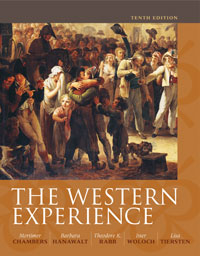1 A) Roman. B) Celtic. C) Huns. D) Germanic. E) Kurdish. 2 A) Donatist B) Roman C) Arian D) Byzantine E) Augustinian 3 A) individual ownership of property. B) kindreds made up of families linked by common ancestry. C) chiefs, free warriors and their families, and slaves. D) strong kingship rooted in the distant past. E) a lack of equality. 4 comitatus of the Germanic society wasA) the style of warfare that was used in the invasion of Roman lands. B) an assembly or council of free warriors that contributed to the decision making of the chief or king. C) the division of property among individual patriarchal families. D) a kinship group composed of patriarchal families. E) a band of warriors organized under the leadership of a chief. 5 A) reliance on custom rather than written laws. B) councils and assemblies to advise kings and chiefs. C) a system of compensation based on the social rank of the individual. D) a special role for women as judges and advisors. E) limits on the powers of the king to make legal decisions. 6 A) assimilated with the existing Roman and Celtic inhabitants. B) exterminated the existing Roman and Celtic inhabitants. C) enslaved the existing Roman and Celtic inhabitants. D) remained separate from the existing Roman and Celtic inhabitants. E) substituted pagan religious rituals for Christian ones. 7 A) Justinian the Great of Byzantium began his program of public works, restoring the Eastern Empire. B) the emperor Constantine transferred the capital of the Roman Empire from the west to the east in 330. C) Justinian the Great of Byzantium began his campaigns to retake the Western Empire. D) the German tribes that invaded the Western Empire converted to Christianity. E) the initial wave of tribal migrations from the West ceased. 8 A) the destruction of the Persian Empire. B) the reconquest of the Western provinces. C) the reformation of laws and institutions. D) the creation of splendid public works. E) the reconciliation of the Eastern and Western branches of the Church. 9 A) the Saxons B) the Visigoths C) the Ostragoths D) the Lombards E) the Franks 10 A) was conservative with the Roman population, taxing them heavily and returning very little in the form of funding or public works. B) brutally suppressed the Catholic Church in favor of his Arian Christianity. C) attempted to combine the Gothic state with the remnants of the Roman one. D) issued law codes and kept a court in Ravenna similar to that of Byzantium, in which all officials were Romans. E) forced the Roman population to adopt Goth laws and codes of government. 11 A) courting the support of the military elite troops on horseback. B) supporting the activities of Christian missionaries. C) defending the Pope from attacks by the Lombards in Italy. D) assassinating the last, feeble Merovingian king, Childeric III. E) having a sympathetic military aristocracy and ecclesiastical hierarchy depose the last Merovingian king. 12 A) a rejection of non-subsistence crops such as wines, olive oil, and the production of linen and woolen cloth. B) a new, heavy plow that turned over the soil to create furrows that drained excess water. C) a new harness for horses that rested on their shoulders and thus enabled them to pull a full load. D) a new three-field system of crop rotation that supported two crops per year and reduced fallow. E) the emergence of the single-family peasant farm as the basic unit of agricultural production. 13 A) an end to private farms, as peasants began to work the land of lords as part of a pre-feudal system. B) a change in family roles as men became farmers, whereas women had formerly done all agricultural work. C) an increase in regional agricultural trade across the upper Mediterranean. D) an improvement in the military structure and efficiency of German armies as men became more available for military work while women ran the household. E) an increase in warfare and instability in Greece and Northern Italy. 14 A) the doctrine of Petrine succession. B) Rome's traditional association with central power. C) the Cyprian doctrine calling the pope the "bishop of bishops." D) the popes' role in defending and ruling central Italy. E) as the authority of the emperors declined and disappeared in the West, people still looked to Rome for leadership. 15 A) Basilian. B) Gregorian. C) Benedictine. D) Stylite. E) Franciscan. 16 A) they set an example of good farming practices and estate management. B) they provided communities independent of the structures of local power. C) they preserved copies of both pagan and Christian Latin literary works. D) they supplied kings with both advisors and administrators. E) powerful families established religious communities on their lands. 17 A) they sought the metalworking riches, primarily gold and silver, of the Byzantine lands. B) they were fleeing from Hunnish raids. C) they sought to overthrow Byzantine military control of the Eastern Empire. D) their population had exploded to the point of needing expansion of land. E) they sought to sack Rome as retribution for past abuses. 18 exegesis isA) a vast, encyclopedic work. B) a meditation that highlights the role of philosophy in solving human problems. C) a work of commentary on and interpretation of the Bible. D) a book of instructions for bishops. E) a compendium of illicit rituals condemned by the Church. 19 A) Boethius. B) Gregory. C) Boniface. D) Theodoric. E) Augustine. 20 A) Boethius. B) Gregory. C) Boniface. D) Isidore. E) Clement.





